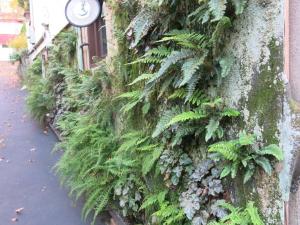I have two gardens. The one in my mind’s eye is perfect and exactly how I wish it. The other is here on earth, around my house, fodder for pests and vulnerable to the vagaries of weather. Striving to get the real garden reach the ideal of the one I dream about is an eternal quest. The saving grace is that most gardeners share my struggle. No matter where we garden and what size of land we command, the yearning is the same.
Starting in the fall when planting for the next growing season is going full throttle, we are motivated by the vision where all our plans succeed. Through the winter months we plot and plan for the perfect garden. It’s what gets us through the dreary, cold days. The real problem arises if we dwell too much in fantasy land and get carried away. Practicality, patience and common sense must moderate those ambitions. Sometimes, in the eagerness to achieve beauty and form, it is easy to forget about function and balance.
A garden can look beautiful but in truth, it should also provide. It must delight, inspire, feed, comfort, educate and most importantly, do no harm to the environment. This sounds like a tall order but in simply following that last dictum, the rest will happen easily. There is nothing more fundamental to us than to create an attractive, productive, safe haven.
By choosing the right plants for the right location, selecting mostly natives that in turn will attract and support native fauna, employing organic practices, judicious use of precious resources like water and energy consuming tools and in giving diligent care, any spot of land can shine. Truly.
But that doesn’t mean it precludes indulging in dreams. If I didn’t envision a riot of spring color, I wouldn’t be torturing my body by planting hundreds of bulbs each fall. If you hanker for plants that thrive in a different climate and/or are invasive, reasonable alternatives are usually available and will satisfy your vision. Native honeysuckle instead of the Japanese variety, Rose of Sharon can be pruned to grow single or multi-trunked shrubs and are lovely substitutes for crape myrtles. (Select a sterile type so you are not burdened with digging up seedlings all the time.) Russian sage or nepeta are excellent stand-ins for lavender.
If you adore roses but cannot grow them or would like their ‘look’ throughout the growing season, I recommend ranunculus, peonies, camellias, double begonias and dahlias. Native wisteria is better behaved than the Asian types. A myriad choices of native grasses are excellent alternatives to exotic ones. There really is a way to make garden dreams come true. Within reason. You’re on your own if you insist on making your north-east garden into a tropical paradise.
Having said all this, I still dream big. Lush, impossibly wonderful dream gardens. From those wild fantasies come ideas more realizable, creative and applicable in my true, earth-bound garden. Several features that have become hallmarks in my garden came from dreaming. While I’ve learned to temper my reveries with budget constraints, physical and/or time limitations to make my real garden, I give free rein to my imagination. After all, it was Albert Einstein who said – Imagination is more important than knowledge. Knowledge is limited to all we now know and understand, while imagination encircles the world, and all there ever will be to know and understand.
And look what he managed to contribute.
See below for some real features that came from my imaginary garden:
(c) 2016 Shobha Vanchiswar
[do_widget “Blog Subscriptions (Jetpack)”]


















































































